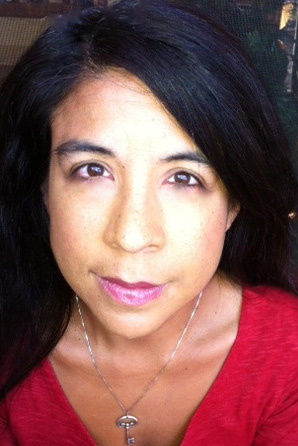Interior Scene: A college theater classroom
Professor: Who are the first five playwrights that come to mind? Anyone?
Student: Shakespeare, Chekov, Miller, O’Neill, Beckett.
Professor: OK, and who would you say are their best characters?
Student: Iago, Uncle Vanya, Willy Loman, Hickey, Estragon…
Professor: Good—complex roles, lots of stage time. Any female characters we could add to the list?
Student: (drumming fingers on desk):Um...Lady MacBeth?
Most of us, asked to list major female playwrights and stage roles, could probably count the number we know on 10 fingers, while we’d need five or six hands to list their male equivalents.
The reason is simple, says Alan MacVey, director of the UI Division of Performing Arts and chair of the Department of Theatre Arts: “There are many more male than female playwrights in the industry, and more good stage roles for men than for women. It’s a well-known problem.”
“It’s particularly difficult to find good scripts for performing arts education,” he adds, noting that many substantial female roles—central, complex character roles rather than supporting or stereotypical roles—are for characters middle-aged and older, which can be a struggle for young actors to portray.
That’s why, in 2010, MacVey proposed that the Big Ten Theatre Consortium (the group of theater department heads at Big Ten Conference universities) establish a commission program to support female playwrights and provide female theater students and professional actors with strong roles. The program would not only be the first of its kind, but would also represent the first time the Big Ten Consortium schools collaborated on a project. MacVey’s colleagues embraced the idea and set about crafting the details.
New plays, strong roles
Beginning in spring 2014, the Consortium’s New Play Initiative will commission, produce, and publicize a series of new plays by female playwrights, each of which will contain several significant roles for college-aged women. The plays will serve not only collegiate theater programs but the professional theater as well.
The group plans to commission one play each year for three years, and as the project progresses will commit to additional years, hopefully as many as 10. Each commission will include a $10,000 artist payment (shared among the schools) and the provision that any Big Ten university can perform the play royalty-free for up to three years.

For their first commission, the consortium has chosen Naomi Iizuka, one of the nation’s most acclaimed dramatists, head of playwriting at the University of California–San Diego, and a 1999 visiting faculty member in the Iowa Playwrights Workshop.
Her widely produced plays include 36 Views, Strike-Slip, and Anon(ymous). For the Big Ten commission, she’s working on a provocative play entitled Good Kids, which will explore, in her words, "a casual sexual encounter gone wrong and its very public aftermath.” Set in a Midwestern high school, “in a world of Facebook and Twitter, smart phones and YouTube,” the play will provide an abundance of powerful, contemporary roles for theater students of both sexes.
Iizuka will present a draft of the script to the consortium by March 1. Several of the Big Ten theater departments are likely to perform the play during their 2014–15 seasons, MacVey says, including the UI’s. But because the universities are equal partners in the project, no single school will have the official distinction of hosting the premiere of any play; instead, the consortium will host “rolling” premieres.
Where are the women?
First, the numbers:
- Less than 20 percent of the works in American and British theaters are written by women.
- Men’s roles outnumber women’s roles by half in major theaters across the U.S.
- Women make up 60 to 70 percent of U.S. theater audiences.
- More women than men enroll in university theater programs. At the UI, women comprise 62 percent of theater majors and 70 percent of theater graduate students. Of the 11 students in the UI’s MFA-granting Playwrights Workshop, seven are women.
If they’re in the classrooms and the audiences, why aren’t women—and their plays—on more stages? Some blame the unstable nature of careers in the theater industry, which often entail a nomadic lifestyle without benefits like maternity leave; some point to attitudes and practices that prevent women from entering the upper levels of theater management; others blame “the Shakespeare inheritance,” saying that female underrepresentation is an inadvertent holdover from the male-centric theater of ages past, which barred women from both writing and acting, with the result that most plays were written by men, for all-male companies—the same plays that form a substantial part of today’s classical canon. (Fact: Of Shakespeare’s 981 characters, only 155 are female. His most talkative heroine, Rosalind, has 730 lines; Hamlet has 1,539.) According to contemporary playwright and director Julia Pascal, most subsidized theater venues in the U.S. and Britain remain run by men who “choose male writers to write about male experiences.”
Whatever the cause, the issue is dauntingly complex, involving cultural attitudes and longstanding industry practices. A solution is desperately needed, but few seem to know where to start.
Fortunately for Iowa and the other Big Ten schools, Alan MacVey and his colleagues realized that “as educators and directors of theater training programs, we are uniquely positioned to address the problem from the ground level. With the commissions, we’re doing three things at once: developing challenging scripts for our female students, scripts that will make them stronger actors; supporting outstanding female playwrights; and encouraging the production of more plays by women, which we hope will be widely produced by colleges and professional theaters.”
(Applause.)